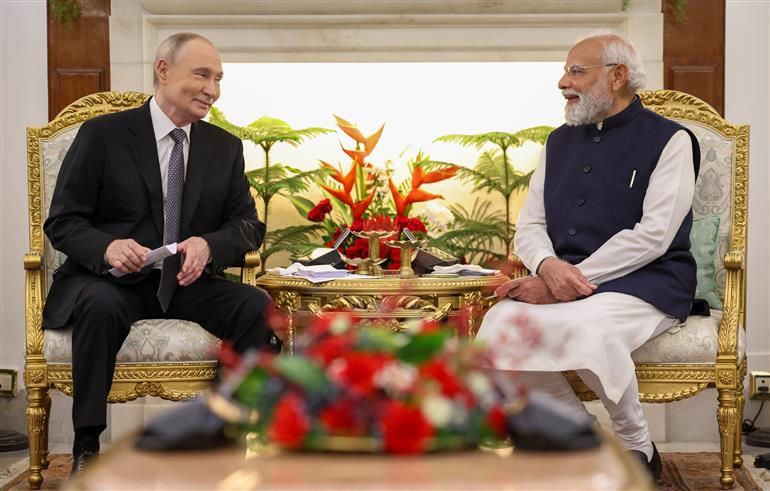Countering Drone and Missile Swarms: Developing Indian Capability
- rkbhonsle
- Apr 16, 2024
- 4 min read

In this era of strategic and technical surprise in warfare in the 21st Century, Iran’s launch of hundreds of drones and missiles at Israel denotes the necessity where these relatively new instruments of war can be used by a relatively less sophisticated actor to raise the spectre of large-scale damage to an adversary.
That Israel with allies ensured that there was almost negligible losses is also an indicator of the level of air and missile defence capabilities that have been developed by the country surrounded by a host of hostile actors owing allegiance to arch rival Iran.
After the use of hybrid – drone, cruise and ballistic missiles by Russia in Ukraine, such a tactic is quite evidently also demonstrated by Iran despite the low military technology base of the country.
Thus, employment of massive and varied strategic firepower could well become the norm in the future. With two major adversaries on the Western and the Northern border – Pakistan and China respectively, with possibly similar capabilities and numbers in terms of missile and drones, India will have to seriously consider capability in terms of weapons systems and techniques such as electronic warfare to be ready to prepare for a near replication with variations of an hybrid swarm attack.
So What Happened?
Iran launched 170 drones and over 30 cruise missiles and 120 ballistic missiles at Israel on the night of April 13/14. The barrage launched from Iranian mainland a direct flying distance of over 1700 kms was the first massive hybrid swarm of its kind in the Middle East. Some of the weapons launched at Israel were fired from Iraq and Yemen, the spokesman added.
While Russia has been employing similar swarm attacks in Ukraine including on cities and the capital Kyiv the range and the numbers used has been far lesser than that by Iran.
But the package is similar to that used by Russia given the expectations that drones and cruise missiles which would reach Israel earlier will overwhelm the Israeli air defences thereby allowing the ballistic missiles which carried the maximum punch would get through.
Iran had possibly not anticipated that the time taken by the slow moving cruise missiles and drones to travel the 1700 km distance made the Israeli task of identifying and intercepting the barrage much easier.
This also allowed the US, UK, France, and Jordan amongst others? to deploy air defence and fighter assets to target these systems midway and neutralise them.
As per CNN, US officials said more than 70 drones and three ballistic missiles were intercepted by US Navy ships and military aircraft, without giving details of exactly what defenses were used to bring down the projectiles.
US Navy shot down at least three ballistic missiles using the Aegis missile defense system aboard two guided-missiles destroyers in the eastern Mediterranean as per CNN.
US warplanes also shot down Iranian ordnance.
Britain also intervened using Royal Air Force aircraft it has in the region. “These UK jets will intercept any airborne attacks within range of our existing missions, as required,” a UK Defense Ministry statement said.
An Israeli military spokesperson also said France was involved in blocking the Iranian attacks.
Israel Air and Missile Defence Shield
One of the first measures taken by Israel was to block GPS signals across the country thus ensuring that the pre fed drones and missile systems could not reach the desired target. GPS signals were also jammed.
IDF spokesperson confirmed the effectiveness of the GPS jamming, stating, "Israeli intelligence was able to identify and neutralize the imminent threat posed by Iranian drones and missiles through precise jamming of their GPS signals."
Interception was the second tactic employment by deployment of the Iron Dome system along with the David’s Sling, a joint project of Israel’s Rafael Advanced Defense System and US defense giant Raytheon, uses Stunner and SkyCeptor kinetic hit-to-kill interceptors.
A third layer was the Arrow 2 and Arrow 3 systems, jointly developed with the United States. These destroy the missiles in the terminal phase in the upper atmosphere.
Importantly Israeli system as the Iron Dome is connected to a command centre which outlines the trajectory of flight and estimates if the same is likely to cause damage in populated areas or will fall in open ground before directing interception. The Iron Dome has also been deployed for over 10 years now. Thus there is a long experience to back up the system.
Israel deployed F-35 and F-15 fighter jets also targeted the slow moving drones which lacked stealth and were thus easy to detect.
Indian Capability Development Paradigm
Indian military planners will have to think beyond the experience of Israel and anticipate the next level of attacks by hybrid swarms.
Moreover, the distance that these swarms launched from Pakistan or China will travel will be much shorter thus the reaction time will be limited.
Unlike Iran which had given ample warning of the launch of a retaliatory attack on Israel after the killing of a key Quds Force commander in an Israel Air Force attack on the consulate in Syria on April 01, the warning time may also be limited.
In such a scenario, India will have to develop capabilities for detection, identification and interception – through multiple means from electronic to kinetic.
A layered multi system approach to neutralise the threat which may strike Indian strategic zone in a much shorter time frame will have to be envisaged.
What the components of such a system will be needs deliberation.



Comments